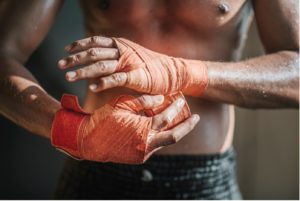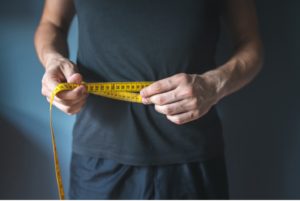By: Thomas Malia, Intern
What are Combat Sports?
Combat sports are a group of sports that involve one on one physical competitions. These competitions usually involve a form of striking or grappling. Combat Sports include Mixed Martial Arts, Boxing, Kickboxing, Muay Thai, Wrestling, Judo, Brazilian Jiu Jitsu, and Taekwondo. Each of these sports divide their athletes based on weight class and gender. Males and Females are split into their own divisions and this divisions are split into weight categories. For example, the UFC a mixed martial arts organization, has weight classes for both men and women. Weight Classes include the following:
Women have 4 weight classes:
- Strawweight (115lbs)
- Flyweight (125lbs)
- Bantamweight (135lbs)
- Featherweight (145lbs)
Men have 8 weight classes:
- Flyweight (125lbs)
- Bantamweight (135lbs)
- Featherweight (145lbs)
- Lightweight (155lbs)
- Welterweight (170lbs)
- Middleweight (185lbs)
- Light Heavyweight (205lbs)
- Heavyweight (265lbs)
In order to qualify to compete in one of these weight classes, you must weigh in officially at or under the weight listed for that weight class. For example, if you weigh in at 154 pounds, you must compete in the lightweight division. However, if you weighed 157 pounds, you must compete in the welterweight division due to being over the limit for the lightweight division.

What is weight cutting?
Weight cutting is the process of combat sport athletes engaging in Rapid Weight Loss (RWL) prior to officially weighing in, followed by Rapid Weight Gain (RWG) prior to competition. 80% of combat sports athletes utilize weight cutting throughout the various combat sports.1 The reason the athletes perform this process of RWL followed by RWG is so that they can compete at a weight limit above their designated weight class. For example, an athlete competing in the lightweight division must weigh 155 pounds during the official weigh in but can compete at a weight of around 165 pounds. You would be at a significant disadvantage if you do not cut weight for combat sports.

How is weight cutting done?
Weight athletes gradually lose weight over the course of a week to reduce the strain on the athlete’s body. Through various techniques such as calorie reduction, fluid manipulation, carbohydrate restriction, sweat loss, and even water loading, the athlete will reduce their body weight by up to 7% prior to weighing in.2
Calorie reduction is a way to reduce overall body mass prior to beginning rapid weight loss. The reduction of calories combined with exercise places the athlete in a caloric deficit which will cause weight loss.3 This is a multiple month-long process that occurs prior to the week of weigh ins for a gradual reduction in body weight.
Fluid manipulation is the process of drinking large amounts of water leading up to the date of the weigh in. While water loading, they will reduce the amount of sodium intake through food and then drastically reduce their fluid intake. This will lead to increased urine production and result in loss of body weight.2
Through carbohydrate restriction, they will reduce the amount of water molecules that bind to carbohydrates as well as reducing glycogen stores in the muscles to help reduce body weight.4
Through excessive sweating through sauna use or use of a sweat suit combat sports athletes will further reduce their body weight to make weight for their competition.5 Once the athlete has weighed in, they can regain weight up to 10% of their body weight through food and fluid intake prior to their competition.1

What are the benefits of cutting weight?
The main benefit of cutting weight is that it will typically result in the athlete gaining a size advantage over their opponent. In combat sports, having a size advantage can be a significant benefit as it could mean the difference between victory and defeat. By having a size advantage through either weight or height, the dynamics of the competition can change greatly. If you have a weight advantage, it may be more difficult for your opponent to grapple and control you in sports such as wrestling, Judo, and Brazilian Jiu Jitsu. If you are significantly taller than your opponent and able to cut weight, you will have both a size and reach advantage which will help you in both grappling and striking sports as it will give you a reach advantage.

What are the cons of cutting weight?
There are many negative aspects to the practice of weight cutting that can affect combatant performance. One negative is the likelihood of remaining dehydrated as this will decrease athletic performance. As many as 34% of combat sport athletes are dehydrated when they compete2. This results in less total body water, reduced blood volume, and reduced total hemoglobin volume. Due to combat sports requiring the athletes to be in excellent aerobic condition, a reduction in oxygenation through less hemoglobin will negatively impact their ability to perform2.
Reduced glycogen stores is another side effect of weight cutting. Your body uses glycogen stored in skeletal muscle for energy and weight cutting often depletes these stores during the RWL period. Replenished glycogen stores are important as they provide energy for the athlete and will negatively impact performance if left empty. 3
The last con of weight cutting is that it can be dangerous if performed incorrectly as kidney damage may occur. During the RWL phase, Creatinine and Blood Urea Nitrogen or BUN levels are negatively impacted.5 Plus, if an issue occurs where the body’s core temperature rises too much heat stroke can occur and even lead to fatalities6. Weight cutting is mentally and emotionally taxing and negative psychological impacts on the athlete at a time when they need to be focused on the competition instead of dangerous weight cutting practices.
How can I cut weight safely?
The safest methods for cutting weight involve a steady reduction in body mass prior to competition date. The safest methods for RWL are ones that do not involve excessive water loss and dehydration through sweating. Water loading and fluid manipulation are the safest and most effective methods of cutting weight.4 Additionally, utilizing the advice of a Registered Dietitian Nutritionist will help reduce the risks associated with cutting weight while maximizing the benefits. Dr. Schubert does NOT recommend the use of extreme sweat loss or crash diets for weight reduction as these can have potentially deadly side effects.
References
- Brechney, G. C., Cannon, J., & Goodman, S. P. (2022). Effects of weight cutting on exercise performance in combat athletes: A meta-analysis. International Journal of Sports Physiology and Performance, 17(7), 995–1010. https://doi.org/10.1123/ijspp.2021-0104
- Reljic, D., Hässler, E., Jost, J., & Friedmann-Bette, B. (2013). Rapid weight loss and the body fluid balance and hemoglobin mass of elite amateur boxers. Journal of Athletic Training, 48(1), 109–117. https://doi.org/10.4085/1062-6050-48.1.05
- Barley, O., Chapman, D., & Abbiss, C. (2019). The current state of weight-cutting in combat sports. Sports, 7(5), 123. https://doi.org/10.3390/sports7050123
- Park, S., Alencar, M., Sassone, J., Madrigal, L., & Ede, A. (2019). Self-reported methods of weight cutting in professional mixed-martial artists: How much are they losing and who is advising them? Journal of the International Society of Sports Nutrition, 16(1). https://doi.org/10.1186/s12970-019-0320-9
- Lakicevic, N., Paoli, A., Roklicer, R., Trivic, T., Korovljev, D., Ostojic, S. M., Proia, P., Bianco, A., & Drid, P. (2021). Effects of rapid weight loss on kidney function in combat sport athletes. Medicina, 57(6), 551. https://doi.org/10.3390/medicina57060551
- Lakicevic, N., Reale, R., D’Antona, G., Kondo, E., Sagayama, H., Bianco, A., & Drid, P. (2022). Disturbing weight cutting behaviors in young combat sports athletes: A cause for concern. Frontiers in Nutrition, 9. https://doi.org/10.3389/fnut.2022.842262
*Photos obtained through stock photos on Microsoft Word.
Interested in learning more about Sports nutrition? Check out the services available here to see if Dr. Schubert would be a good fit for you and your team! If you have questions about weight cutting or sports nutrition in general, please contact Dr. Schubert here. Check out this article about Fall Seasonal Drinks, or this one about Creatine for more nutritional information.
